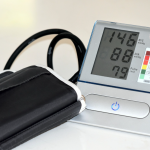Prefer to listen? Check out my podcast here!
When humans lose weight, about two thirds of the weight is lost as fat, and about one third as lean tissue. With highly effective weight loss medications, the proportion of fat vs lean tissue that is lost is about the same as with lifestyle changes. However, because the absolute amount of weight loss is typically much greater with highly effective weight management medications, the amount of muscle tissue lost could become excessive, a condition called sarcopenia.
In a recent blog post, I discussed how to screen for and diagnose sarcopenia (depletion of muscle) in the clinic. Health care providers need to be vigilant for sarcopenia in people with obesity, as sarcopenia can be present even before losing weight. People at higher risk of sarcopenia include older people, and people with chronic health issues (eg diabetes, heart disease, kidney disease, liver disease). Today, let’s talk about how we can prevent or treat sarcopenia, when using weight management medications. And, which is the more important strategy: increasing exercise, or ensuring adequate dietary protein intake?
To understand the relative importance of physical activity and dietary protein, it’s important to understand that when we lose muscle during weight loss, it is due to an increased breakdown of muscle (not a decrease in muscle protein production). Thus, to offset muscle breakdown, we need to oppose the breakdown of muscle. The way we do that is with physical activity.
Physical activity should ideally include both resistance exercise and weight-bearing activity. It’s super important that physical activity prescriptions are individualized. While Canadian adult healthy living guidelines recommend 150 minutes per week of moderate-to-vigorous physical activity, how this is defined and how much is reasonably accomplished can be extremely different from one person to the next. For some people, moderate-to-vigorous activity may be a jog; for others, it may be walking up a flight of stairs in their house. Health issues may limit certain activities (eg arthritis and weight-bearing activity), so physical activity strategies need to take this into consideration. Evaluate where each person is at, and help them develop achievable bite-size goals to move forward in physical activity one step at a time, selecting activities that that person enjoys and is able to do.
Ensuring adequate protein intake is important too, as we need protein as building blocks to continue to synthesize muscle protein. With the marked decrease in appetite, and changes in food preferences that often happen with weight management medication, daily intake of protein could change dramatically. Focus on eating well, not eating less (the weight management medication can help take care of the latter for you).
Just how much protein intake is recommend remains a topic of debate. Too much protein intake can be hard on the kidneys, but there isn’t a consensus on just how much ‘too much’ is. Several kidney docs have advised me over the years that healthy people should not eat more than 1.5g protein per kg body weight per day. Some publications say that healthy adults participating in strength training programs can safely go up to 2.2g/kg/day (max 250g). There is also no consensus as to whether a calculated protein intake per kg body weight should be based on actual body weight or ‘ideal’ body weight. Importantly, people with kidney disease have lower maximums for daily protein intake. Always discuss your individualized protein intake prescription with your health care team.
Interestingly, in a recent opinion article in JAMA, authors state that “the recent concern that marked weight loss induced by GLP1 based antiobesity medications can cause physical frailty or sarcopenia is not supported by data”. The issue here is that we haven’t looked for frailty or sarcopenia in studies of obesity medications. A couple of studies of highly efficacious weight management medications have included body composition evaluation with DEXA scans [eg the STEP1 study of semaglutide 2.4mg (Wegovy), and the SURMOUNT1 study of tirzepatide (Zepbound)], but DEXA scans don’t give a specific analysis of skeletal muscle (rather, they lump together skeletal muscle with other body components like organs, skin, connective tissue, and water together as a ‘lean mass’). To really know what happens to muscle mass requires more sophisticated imaging techniques like MRI. Also, muscle quality can improve with weight loss (due to loss of fat inside the muscle – think of marbled meat), and physical function can actually improve due to both loss of weight and improved muscle quality, even if the absolute amount of muscle decreases. So what we really need, perhaps more than anything else, is to objectively assess muscle strength and physical function in clinical trials of obesity medication.
BOTTOM LINE: Health care providers should screen for sarcopenia, evaluate muscle strength (grip strength test), physical function (sit stand test), and assess protein intake before and during weight management medication therapy. If sarcopenia develops while on weight management medication, a decrease in the dose of medication may be required. To mitigate muscle loss while losing weight, physical activity is probably the most important factor, but ensuring adequate protein intake is also important.
PS – there are currently no weight management medications that preserve or build muscle mass, but there are several currently under development – stay tuned!
A huge shout out of gratitude to Dr Stuart Phillips, exercise physiologist expert extraordinaire at McMaster University, with whom I presented with recently on this topic, and who has helped me to better understand this interesting space.
Disclaimer: I receive honoraria as a continuing medical education speaker and consultant from the maker of semaglutide (Novo Nordisk) and tirzepatide (Eli Lilly). I am/have been an investigator in clinical trials of semaglutide and tirzepatide.
Check me out on X/twitter! @drsuepedersen
Share this blog post using your favorite social media link below!
www.drsue.ca © 2024












